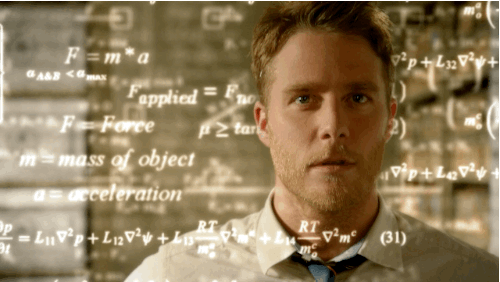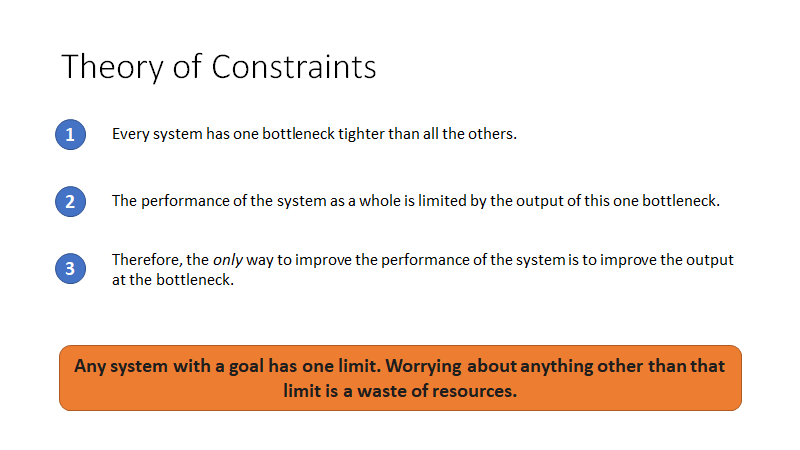Welcome to the latest edition of Sunday Reads, where we look for cheat codes to life, business, and careers (sometimes we even find them!).
If you’re new here, don’t forget to check out some of my best articles: The best of Jitha.me. I’m sure you’ll find something you like.
And here’s the last edition of my newsletter, in case you missed it: Sunday Reads #132: Stop trying to hit me, and hit me!.
This week, let’s examine the old adage, “It’s easy to sell a dollar for 80 cents”. Is it really? Now, you know I’m clearly setting you up to say it’s actually quite hard. But why is it hard?
And other golden nuggets and link love, of course: intrepid explorers of the outback, unbelievable math puzzles, and biohacking 2.0 (it’s not what you think).
PS. Do subscribe if you haven’t 😊.
1. Can you sell a dollar for 80 cents?
It's funny how everyone who says, "It's easy to give people a dollar for 80 cents"… hasn't actually tried it.
Because if they did, they'd realize it's not easy. In fact, it's very, very hard.
What's the catch?
Hold that question for a bit.
"Even my driver could do it."
Back in the early days of ecommerce in India, it was common for the doyens of industry to disparage online marketplaces. "Sure, anyone can build a ‘big business’ if they give stuff for free".
I remember a business event nearly a decade ago, where Rakesh Jhunjhunwala (billionaire Indian stock market investor) berated Flipkart's leaders:
"So, you sell everything below cost. Well, even my driver could do that!"
Disclaimer: I have never met Rakesh Jhunjhunwala's driver. But unless his name is Clarke Kent, I doubt it.
Because, you see: The constraint isn't value. It's distribution.
Remember the Theory of Constraints?
As I wrote in The Grand Unified Theory of Management:
Here's the thing: Distribution becomes the critical bottleneck, far earlier than you think.
Any work on the product beyond a basic level is an illusion, if you don't have distribution.
People and organizations (even governments!) struggle to give stuff away for FREE, never mind at a discount.
Without distribution, value is meaningless.
Writers understand this a little more viscerally than most. As we shout into the ether every week, it very often is a "tree falls in a forest but no one is listening" kind of situation.
You may offer a free lunch. But what if no one shows up to eat?
I experienced this with my startup too.
We got to 20K users, and after that, no matter how much we innovated on the product, the needle didn't move.
Until we solved for distribution.


As Peter Thiel says in Zero to One:
Superior sales and distribution by itself can create a Monopoly, even with no product differentiation.
The converse is not true. No matter how strong your product—even if it easily fits into already established habits and anybody who tries it likes it immediately—you must still support it with a strong distribution plan.
So what's the solution?
As I said in Sunday Reads #116: How to become stronger, the solution is:
Ship when you're 70% there.
Ship your work early, ship your work fast. Get early feedback, work on it, and improve.
Once you’re at 70%, just do it.
The book is 70% done? Launch it.
The project is 70% finished? Ship it.
Visakan V says something similar in Solve for distribution.
Your product doesn't need to be stellar to start with. It just needs to be better than average.
After you get the product to that level, you need to focus on distribution.
I generally advise against making overly large/complex/ornate products w/o doing any audience-building work, without (at least partially) solving for distribution.
My products – t-shirts, ebooks – aren’t that good. I’d give em ~3.4/5 stars myself. but that’s about all you need. just get to about 3 out of 5 stars on product, and 4 out of 5 stars on distribution, and then you can sell and sell and sell to more and more people.
most people’s intuitions don’t seem to be calibrated to understand this.
and the cash money you receive from all that sales, you can then use that to make your product even better. there’s a sort of stereotype assumption that salesy people just don’t care about product at all. it doesn’t have to be that way. you can care if you want to. I care.
Rabbitholing (only a wee bit, I promise!).
There are several interesting implications of this. Of the fact that distribution is everything.
a. If you have strong distribution, you can blatantly copy others.
Facebook and Instagram copying Snap is the canonical example. As TechCrunch reported in Nov 2017,
Instagram and WhatsApp’s Snapchat clones aren’t slowing down.
Today Facebook CEO Mark Zuckerberg announced Instagram Stories and WhatsApp Status both now have 300 million daily active users. That’s up from 250 million for Instagram in June, and WhatsApp in July.
That makes the copies almost twice the size of the original, as Snapchat’s entire app only has 173 million daily active users.
And in the B2B arena, you have Microsoft.
b. Any successful product company becomes a distribution company over time.
This is a tried-and-tested method for big companies to grow. Once you have a distribution funnel, you can put whatever you want through it
As Marc Andreessen says in Where to Go After Product-Market Fit,
The general model for successful tech companies, contrary to myth and legend, is that they become distribution-centric rather than product-centric.
They become a distribution channel, so they can get to the world. And then they put many new products through that distribution channel.
Elad Gil adds, in Product To Distribution,
This pattern of distribution as moat and competitive advantage was used ruthlessly by the prior generation of technology companies.
Microsoft bought or built multiple franchises including Office (Word, PowerPoint, Excel were all stand alone companies or market segments), Internet Explorer, and other products and then pushed them down common business and consumer channels.
Cisco has purchased dozens of companies that were then repositioned or resold to their enterprise and telecom channels.
TL:DR: Solve for distribution. Don't build hidden masterpieces that no one else will see.
PS. Speaking of distribution, I'm starting a podcast soon. If you have any insight into podcast distribution, let me know. Would love to learn!
2. Golden Nugget of the week.
My wife bought some low-calorie pasta last week. It's an amazing innovation - a whole bowl of pasta is just 9 calories!
The magic is because it uses a grain (Konjac flour) that the body can't digest. So it goes straight in and straight out.
It reminded me of Joseph Henrich's book, The Secret of our Success.
The book is littered with examples of explorers marooned in unfamiliar environments. Most of these explorers starved to death. (not bedtime reading for your kids, this one).
One of my favorite examples is of Burke and Wills, two explorers journeying through the Australian outback in 1861.
They found a local wild grain, called nardoo. They thought their food supplies were secure, because nardoo was everywhere.
Only problem was, they didn't know how to cook it properly. So, just like my Konjac flour, they ate prodigious amounts of nardoo but got no nutrition at all.
And today, I'm actively choosing to eat something that's not nutritious... for health reasons!
Or as I tweeted:


Oh what a privileged life we lead.
3. Link love
Malware in a strand of DNA (link)
When they said this was biohacking 2.0, I didn't realize what they meant...
This math puzzle blew my mind 🤯
Here's an explanation.
In summary: Math is clean but reality is messy. And you can do fun things in the margin.
Working in the Metaverse 👓.
Great article on what a 40-hour work week in VR looks like: Working From Orbit.
And this is how meetings will run in the Metaverse.
That's it for this week! Hope you liked today’s edition. Drop me a line (just hit reply or leave a comment through the button below) and let me know what you think.
Would love if you could also share it on Twitter so more people can see it. Thanks a lot!
Until next time, wish you good health, safety, and sanity.
Jitha






